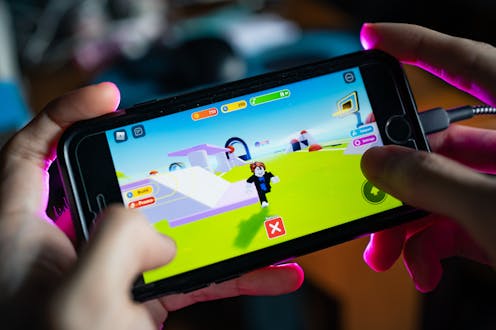‘Should I let my kid play Roblox?’ New safety features reduce risks – but more are needed
- Written by Joanne Orlando, Researcher, Digital Literacy and Digital Wellbeing, Western Sydney University

Roblox isn’t just another video game – it’s a massive virtual universe where nearly 90 million people from around the world create, play and socialise. This includes some 34 million children under 13 who spend an average of 2.6 hours daily on the platform, making Roblox one of the most influential digital platforms for kids and teenagers.
The attraction for young people is the millions of virtual experiences they can have – from raising and dressing up virtual pets, to playing an online game of hide and seek using GPS. Kids can even develop their own games for others to play.
But the joys of the platform come with risks – especially for children. These risks range from cyberbullying to sexual exploitation, to grooming by pedophiles and violent extremists.
Roblox recently introduced a range of new safety features to reduce the risk of harm to children, following consultations with a number of experts (including myself).
Even with these new safety features, however, many parents might still be wondering: “Should I let my kid play Roblox?”
What are the new safety features?
The new features centre on limiting who kids can communicate with on Roblox, the content they play with, and the control parents have on what their kids do on Roblox.
Parents now have more fine-grained controls they can use to manage the type of content, advertisements, friend lists and communication their children have access to. They can also set daily screen-time limits for their children.
Roblox has also changed the ratings of the experiences from age-based ratings to maturity-based ratings (much like the ratings you might see for movies).
The labels are voluntary. But experiences published without one will only be accessible to users 13 and over. This removes the one-size-fits-all idea about kids. Parents know all kids are different – what one 13-year-old is ready for is different to what another 13-year-old is ready for.
Under 13s are no longer allowed to speak to other users outside of mini-games and experiences.
These are all positive steps.
The elephant in the room
To access this new suite of parent controls, parents first need to create a Roblox account, and then link it to their child’s account. To do this parents need to add their ID or credit card details. This is a risk for parents. Our data is being commodified at a rapid rate and scams are rampant, making it difficult for platforms such as Roblox to guarantee the safety of personal information.
What often goes under the radar about Roblox is ongoing messages to spend money. Buy accessories to wear on your avatar while you play, in-game upgrades to make gameplay more fun, accessories for your virtual pets – the list goes on. This reinforces the idea that you need to spend money to have more fun.
The elephant in the room is that the changes made to keep kids safe are housed within parental controls. This requires parents to be very hands on – and digital skills, time, work, busy family life are all barriers to this.
Safety features musn’t just revolve around parents.
Enhanced safety measures could include more defined segregation of experiences, similar to having separate playgrounds for primary school, junior high school and older users, allowing parents greater confidence in age-appropriate content.
A subscription-based model could also replace the current system, potentially reducing the constant pressure on children to spend money.
Implementing youth-led safety initiatives, where older children mentor peers and younger players about online safety, could prove more effective than traditional parent-led guidance. Children often respond better to peers who understand their digital experiences firsthand.
The bottom line?
The new safety features are a step in the right direction. They won’t eliminate inappropriate content and communication risks. But they should help reduce children’s exposure to concerning content and provide parents with better tools to manage their children’s online experience.
Would I let my child use Roblox? Yes – but not in a “set and forget” way. Keeping kids safe on the platform requires constant communication about what they see and do on it.
Realistically, we can’t let our kids play in these huge virtual spaces without this. We have our own parental control – talking to our child – which is powerful as well.
Authors: Joanne Orlando, Researcher, Digital Literacy and Digital Wellbeing, Western Sydney University





